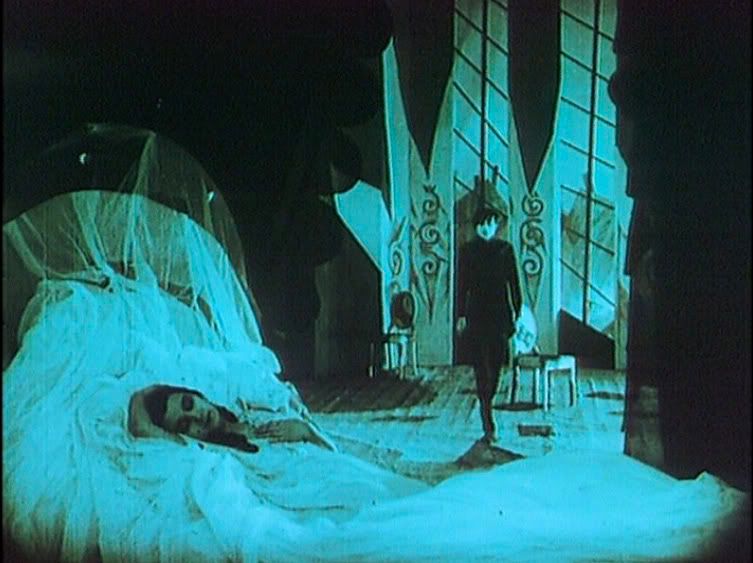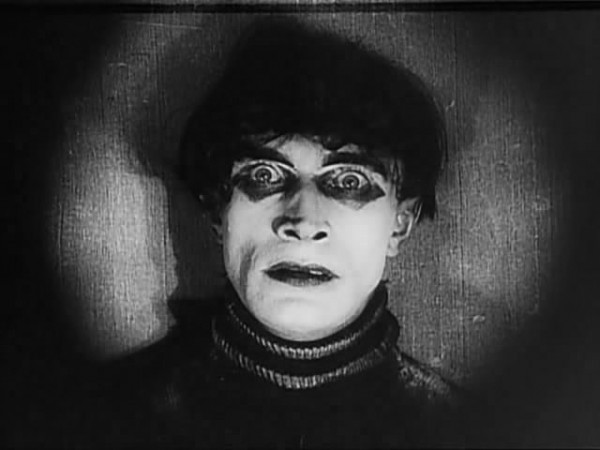 |
| Fig 1. |
Along with Wiene's use of abstract sets he is also considered one of the pioneers for what is now modern day horrors. You notice this from the use of shots that when viewing they immediately send you back into your memory and scenes of a similar nature of recent films come flooding to mind. One of these iconic scenes is when we can see Jane (Lil Dagover) asleep in bed. While this is happening at the front of the shot in the background you see Caesar (Conrad Veidt), Dr. Caligaris somnambulist, creep into her room and kidnap her (fig 2). When watching this the viewer can tell that Weine is trying to convey that the only people who can see what is going on in the background is the viewer. A technique rarely, if ever, used before within a feature film. Where as when watching modern horrors we can see this technique used in near enough every one in some way be it small or large. We can see this point backed up from Rodger Eberts review of the film from where he said '"Caligari" is said to be the first example in cinema of German Expressionism, a visual style in which not only the characters but the world itself is out of joint. I don't know of another film that used its extreme distortions and discordant angles'
 |
| Fig 2. |
Another way in which Wiene draws in the audiences attention is due to the over exaggerated movements of the actors within the film. The use of these exaggerations helps to compensate for the lack of dialogue in the film. When scene that should have conversations between two characters in you could almost tell what was being said between them just from the visual movements and over exaggerated reactions. The use of these exaggerated movements and the obscure camera angles gives the viewer a real feel of what the character is feeling at the time. We can see this several times from close up shots of Dr. Caligari (Werner Krauss) you can see the look of mischievous and suspiciousness on the characters face portrayed using up to several different facial expressions within one shot. What also draws the viewers into these shots is Wiene's use of outlines and boarders. He would have shots which appear to be zooming into the characters face (fig 3). At times it was a normal shot with everything blacked out apart from the characters face giving the illusion of zoom and taking all of the viewers focus and putting in to this one character.
 |
| Fig 3. |
 |
| Fig 4. |
The combination of the abstract set, with bending buildings and sharp shadows, and the use of obscure camera shots along with exaggeration and twists and turns in the story line there is no trouble seeing how this classic horror has helped paved the way for horror films to come with very distinguishable moments that can give flashbacks of horrors to any viewer.
References:
Quote - Rodger Ebert - http://www.rogerebert.com/reviews/great-movie-the-cabinet-of-dr-caligari-1920
Images:
Fig 1 -https://karamelkinema.files.wordpress.com/2014/01/dc00.png?w=640&h=500
Fig 2 - http://i.ytimg.com/vi/imyo9E7GbIU/maxresdefault.jpg
Fig 3 - http://ludditerobot.com/wp-content/uploads/2015/04/caligari14.jpg
Fig 4 - https://1001films.files.wordpress.com/2010/08/vlcsnap-2887143.png
No comments:
Post a Comment